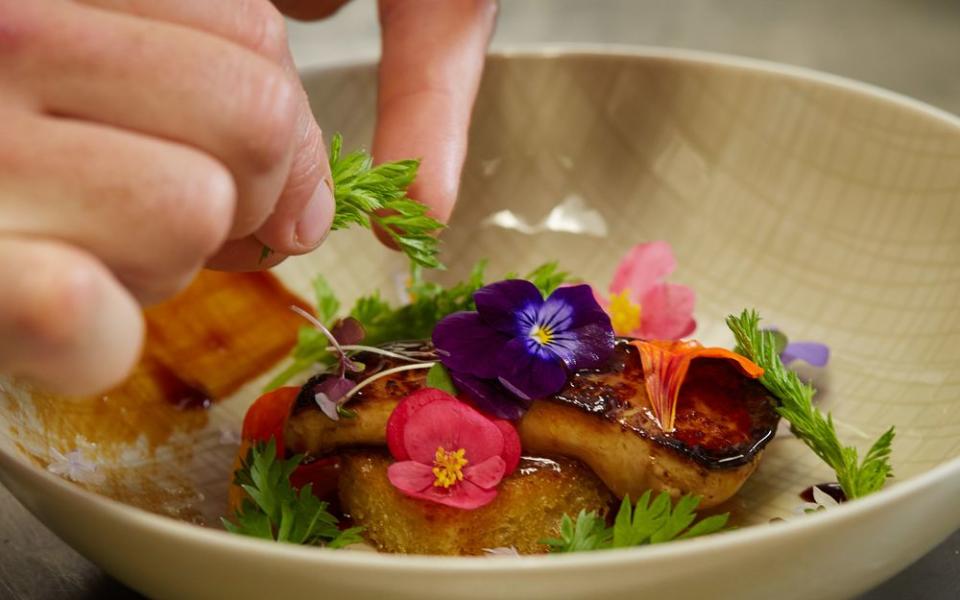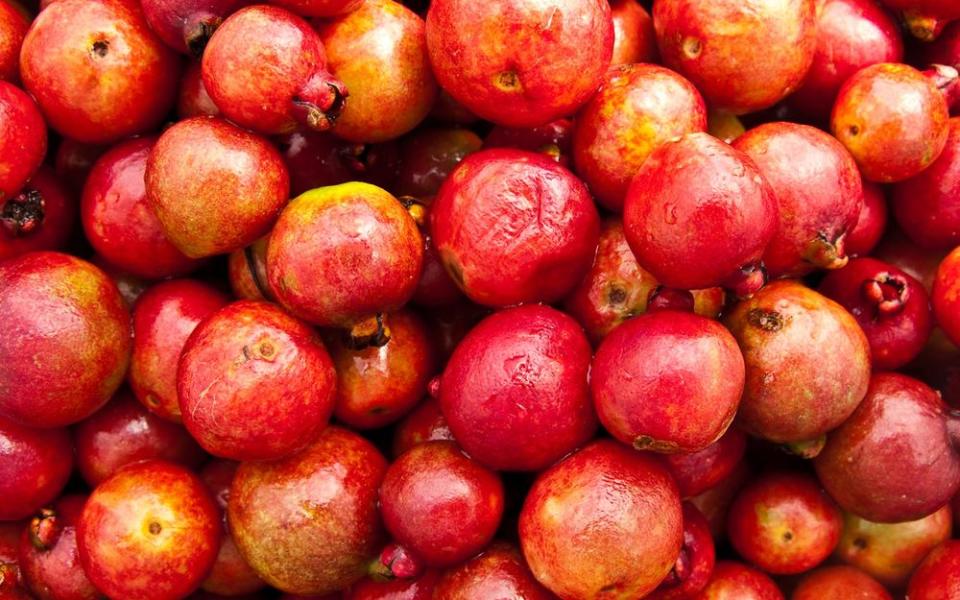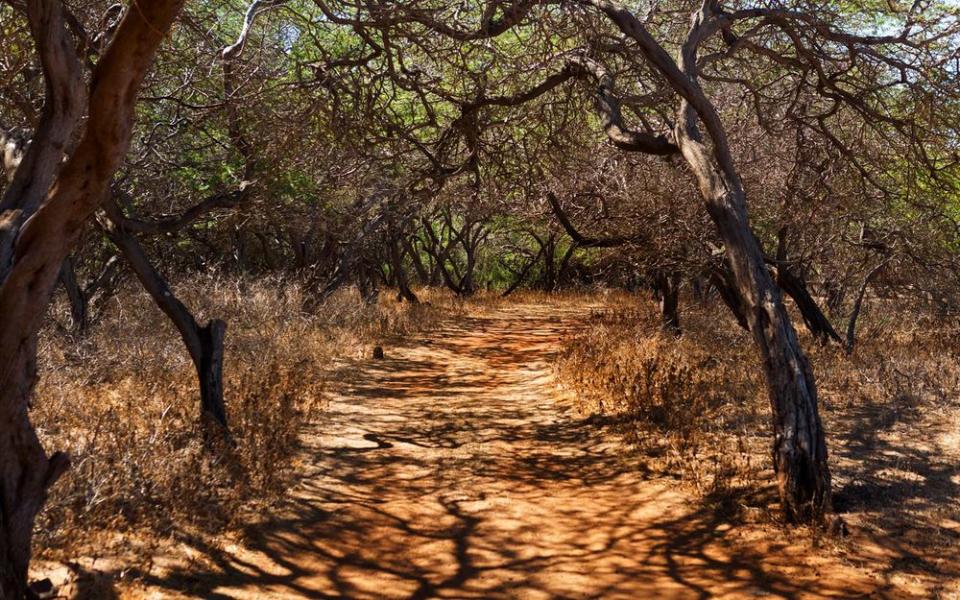Hawaii Is Having an Invasive Species Crisis. Chefs Want You to Eat Them.
My spoon slides through an unidentifiable substance, unexpectedly similar to foie gras, as I glance over my menu to double-check the dish in front of me. “Eat Your Invasives,” it reads. It’s a kiawe flour paté — and it’s delicious..
I’m on Maui at the Grand Wailea's Humuhumunukunukuapua’a restaurant (named after a species of native fish — Humuhumu for short) where the Chef de Cuisine, Mike Lofaro, highlights invasive species on his menu. My current plate includes interlopers like kiawe (a type of mesquite, similar in shape to a green bean, but sweeter) and waiawi (also known as “strawberry guava,” a variety nicknamed for its sweet-tart flavor). Hawaiian culture is grounded in cultivating symbiotic relationships with the land — so why, I wonder, am I not eating poi?
What I didn’t know at the time: native plants such as taro, the main ingredient in poi, are increasingly threatened by an invasive species crisis across the Hawaiian Islands — which has some chefs rethinking their ingredients.

“Kiawe and waiawi are the two most invasive plants on the islands,” said Lofaro during dinner, justifying his additions to the Humuhumu menu. "We have an opportunity to get this information and awareness in front of so many guests every year. It’s a responsibility to us, not a choice."
I turned to Josh Atwood, Invasive Species Coordinator of the Hawaii Invasive Species Council (HISC), to learn more. “Hawaii is the invasive species capital of the world,” he said. "The species that evolved here did so in isolation for up to 70 million years.” Atwood continued to explain that, as a result of colonialism and Western contact, more than 500 species have been introduced to the islands — including hoofed animals and mosquitos, in addition to kiawe and waiawi. “Now, we don’t know how many species are in Hawaii at any given time because they come in at such regularity.”
Waiawi was introduced in 1824 by a horticulturist from Rio de Janeiro. The shallow-rooted, tightly-packed trees quickly invaded native forests to the point of takeover — covering 200,000 acres at time of writing. The kiawe plant also grows in dense thickets. The HISC describes its ability to crowd out native coastal plants, with long, poison-tipped thorns sharp enough to pierce through rubber boots or tires. According to a Council report, “it is capable of rendering large areas impassible.”
The idea to use Hawaii’s invasive species for food was championed by innovators like Hawaiian cultural practitioner Vince Dodge, who lives on Oahu and uses kiawe for his Wai’anae Gold flour, and wild food educator Sunny Savage of Maui. “For any indigenous culture, you look to the land to provide,” Savage told me. “These [invasive species] are things found in most abundance, with a double bonus; being good for the earth to harvest, and beneficial for our human bodies as nutrient-packed food.”

“It is important to remember that these plants, which are horribly damaging our environment, are native somewhere else,” said Grand Wailea’s resident Cultural Ambassador, Kainoa Horcajo, in an interview. Take kiawe — invasive in Hawaii, but a nutritious native staple in South America.
Dodge initially visited Argentina’s Wichí people to learn how they grind kiawe bean pods into a gluten-free, high-fiber, diabetic-friendly flour — something they’ve been doing for thousands of years. He brought the technique back to Hawaii and encouraged a more purposeful use of the species.
Following this lead, chefs throughout Hawaii have begun harvesting, cooking, and serving invasive species, with the aim of educating tourists and locals alike about the invasive crisis.

While waiawi and kiawe are the main focus for both the HISC and the state’s culinary innovators, there are a variety of other species that may also appear on menus soon — from plants like gorilla ogo (an edible seaweed), spiny amaranth (a leafy green), and kahili ginger (a perennial flower) to proteins like chital, or “axis deer,” and Tahitian prawns.
For Horcajo, there’s a certain give and take: “On one side, you want guests to eat taro and fish — Hawaiian foods — because it tells our story. But if you want them to gain a deeper understanding of the reality of our story, eating all our foods is the way to do it.”

